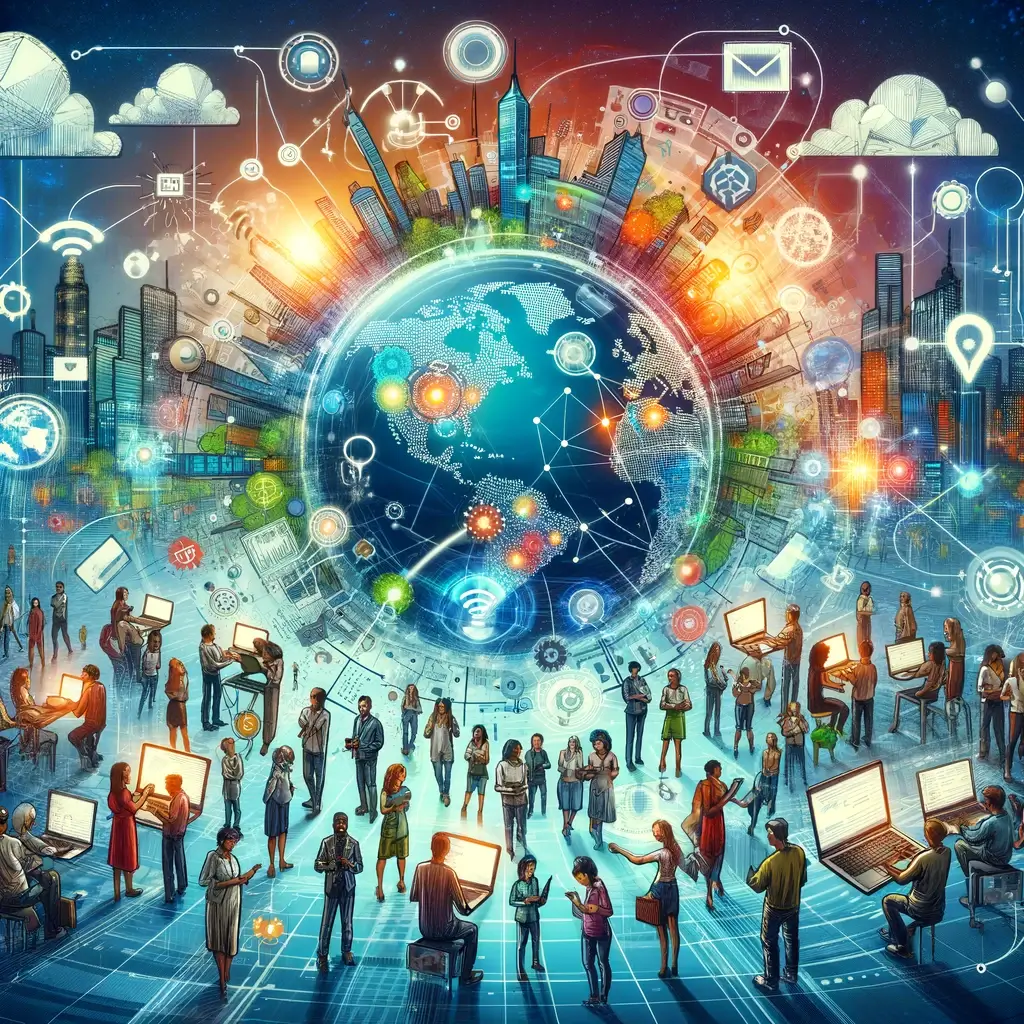Crowdsourcing Innovation: How Communities are Transforming
Crowdsourcing has revolutionized the way innovation occurs, allowing communities to play a pivotal role in driving transformative change. By harnessing the collective intelligence and diverse perspectives of a global audience, businesses and organizations are able to tap into a vast pool of ideas, expertise, and creativity. This shift towards community-driven innovation has not only accelerated the pace of progress but has also fostered a sense of ownership and collaboration, ultimately shaping the future of industries across the globe.
In the digital age, the concept of crowdsourcing innovation has emerged as a transformative force, reshaping how solutions and ideas are generated across industries. By tapping into the collective wisdom of a global community, businesses and organizations can harness a vast pool of knowledge, creativity, and expertise. This collaborative approach not only accelerates the pace of innovation but also democratizes the process, inviting input from diverse perspectives and backgrounds. As we delve deeper into the intricacies and successes of crowdsourcing, it becomes evident how this powerful strategy is fostering unprecedented advancements in technology and beyond, making it a cornerstone of modern-day innovation.
Introduction to Crowdsourcing innovation in Technology
In the ever-evolving world of technology, the term ‘crowdsourcing’ has become a beacon of innovation, drawing in ideas from global communities to shape the future. This collaborative approach leverages the collective intelligence of a wide audience, offering a diverse range of perspectives and expertise to solve complex problems and create groundbreaking solutions.
Definition and Evolution of Crowdsourcing
Crowdsourcing, at its core, involves soliciting contributions from a large group of people, especially from an online community, rather than from traditional employees or suppliers. This concept has evolved significantly since its inception, adapting to the needs of an increasingly connected world where collaboration knows no bounds.
The Impact of Crowdsourcing on the Tech Industry
The tech industry, known for its rapid pace of innovation, has embraced crowdsourcing with open arms. This model has democratized the process of innovation, allowing startups and tech giants alike to tap into a global pool of talent and ideas, accelerating the development of new technologies and applications.

The Mechanics of Crowdsourcing Innovation
Diving deeper into how crowdsourcing fuels innovation reveals a structured yet flexible process that adapts to the unique demands of each project.
Platforms Facilitating Crowdsourced Innovation
Several platforms have emerged as leaders in facilitating crowdsourced innovation, providing the tools and communities necessary to bring collective ideas to life. These platforms range from open innovation networks to specific crowdsourcing websites dedicated to tech development.
Success Stories in Crowdsourcing
The tech world is rife with success stories of products and solutions born from crowdsourcing innovation. From software development to the creation of digital devices, crowdsourcing has proven its worth as a reliable source of creativity and ingenuity.
Challenges and Solutions in Crowdsourcing
Despite its benefits, crowdsourcing innovations is not without challenges. Issues such as intellectual property management, quality control, and ensuring participant motivation are critical. However, with the right strategies and platforms, these challenges can be overcome, paving the way for successful crowdsourced projects.
Crowdsourcing vs. Traditional Innovation Models
To appreciate the value of crowdsourcing, it’s essential to compare it with traditional models of innovation.
Comparative Analysis
Traditional innovation often relies on internal R&D teams within a company, limiting the diversity of ideas and approaches. Crowdsourcing, on the other hand, opens the doors to a global community, enriching the innovation process with a multitude of perspectives.
Advantages of Crowdsourcing in Tech Development
The advantages of crowdsourcing are manifold, including faster problem-solving, cost efficiency, and the ability to test and iterate ideas quickly with a large, engaged community.
Limitations of Crowdsourcing
While crowdsourcing offers numerous benefits, it also faces limitations, such as the need for robust management and coordination efforts, potential quality variability, and the challenge of fostering a productive and inclusive community environment.
The Role of Communities in Tech Innovation
The heart of crowdsourcing lies in its communities – the vibrant, diverse groups of individuals who come together to share their knowledge, skills, and passion for innovation.
Building Engaged Communities for Innovation
Creating and nurturing engaged communities is crucial for successful crowdsourcing. This involves fostering a culture of openness, collaboration, and mutual respect, where every contribution is valued and considered.
Case Studies: Community-Driven Tech Breakthroughs
Examining case studies of community-driven tech breakthroughs offers valuable insights into the power of crowdsourcing innovations. These stories highlight how collective effort and shared vision can lead to remarkable achievements in technology.

Strategies for Cultivating Innovation-Focused Communities
Effective strategies for cultivating innovation-focused communities include providing clear communication channels, recognizing and rewarding contributions, and ensuring a transparent and fair process for evaluating and implementing ideas.
Future Trends in Crowdsourcing Innovation
Looking ahead, the future of crowdsourced innovation is bright, with emerging trends and technologies poised to further enhance the effectiveness and reach of collaborative efforts.
Predictions for Crowdsourcing in Technology
Predictions for the future of crowdsourcing in technology include a greater integration of AI and machine learning to streamline the crowdsourcing process, as well as an expansion in the scope of projects tackled through crowdsourced efforts.
Emerging Technologies and Crowdsourcing
Emerging technologies, such as blockchain and augmented reality, offer new opportunities for crowdsourcing, enabling more secure, immersive, and interactive platforms for collaboration.
The Role of AI in Enhancing Crowdsourcing Efforts
AI plays a crucial role in enhancing crowdsourcing efforts, from automating the management of ideas and contributions to analyzing data for insights that can drive innovation forward.
Conclusion
Crowdsourcing innovation has transformed the tech industry, proving that when communities come together, the potential for breakthroughs is limitless. By embracing collaboration and leveraging the collective
What is crowdsourcing in the context of technology?
Crowdsourcing innovation in technology refers to the practice of engaging a distributed group of people, often through an online platform, to contribute their ideas, skills, and expertise towards a common goal or project. This model leverages the collective intelligence of a broad community to solve problems, generate innovative solutions, and accelerate the development of new technologies.
How do companies benefit from crowdsourcing?
Companies benefit from crowdsourcing innovations in several ways, including access to a wide range of ideas and solutions, cost savings compared to traditional R&D, faster innovation cycles, and the ability to engage with and build a community around their brand. Crowdsourcing also allows companies to tap into specialized skills and expertise that may not be available in-house.
Can crowdsourcing replace traditional R&D?
While crowdsourcing is an effective complement to traditional R&D, it is not a replacement. Crowdsourcing excels at generating a diversity of ideas, rapid prototyping, and engaging with a broad community. Traditional R&D, however, provides depth, continuity, and the resources necessary for long-term development projects. The most successful companies often use a combination of both approaches to drive innovation.
How can one contribute to crowdsourced tech projects?
Individuals can contribute to crowdsourced tech projects by participating in online platforms and communities that host such initiatives. Contributors can offer their ideas, feedback, coding skills, design expertise, or any other relevant skill set. To get started, one should identify platforms that align with their interests and skills, sign up, and begin engaging with active projects.
What challenges does crowdsourcing face in the tech industry?
Challenges facing crowdsourcing in the tech industry include ensuring the quality and feasibility of contributions, managing intellectual property rights, coordinating and motivating a dispersed workforce, and maintaining the security and integrity of the crowdsourcing platform. Overcoming these challenges requires effective platform management, clear guidelines and incentives for contributors, and robust evaluation processes for submissions.




